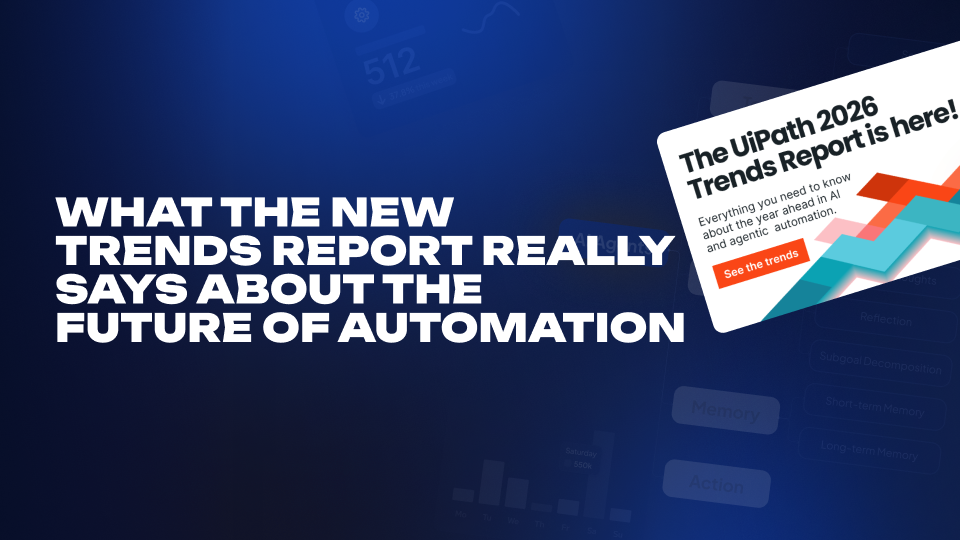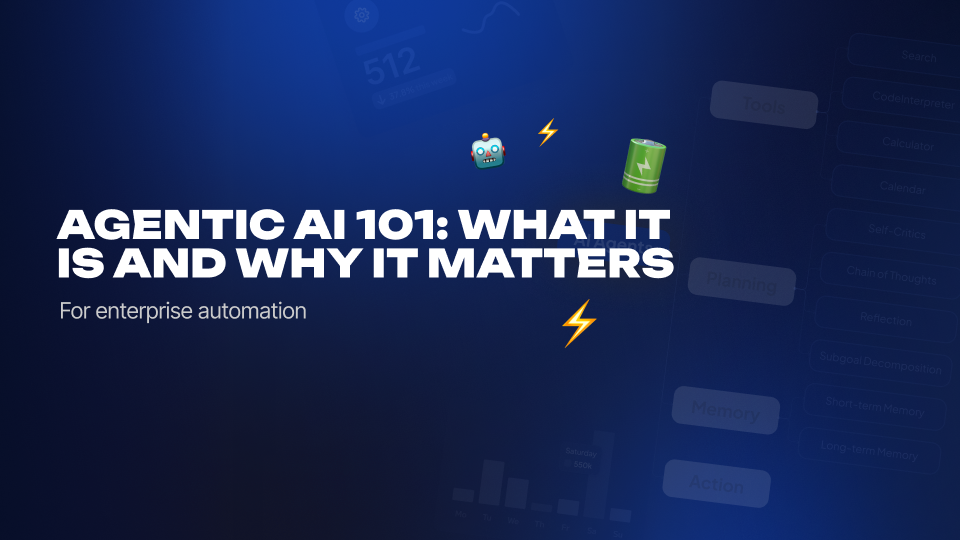
The Intelligent Automation Management Platform Market
For over a decade, Robotic Process Automation (RPA) software has captivated businesses, revolutionizing how they operate. Yet, as the excitement of early adoption faded, the maturing RPA market presented new challenges. Scaling up to a vast fleet of robots brought unforeseen complexities and costs, causing many RPA initiatives to hit a standstill.
In response to these growing pains, the technology market has innovated once again, introducing Intelligent Automation Management Platforms (IAMPs) as the solution to navigate the evolving landscape of automation. This breakthrough not only addresses RPAs scalability and cost issues but also heralds a new era in business process automation.
Why have so many RPA programs stalled?
Robotic Process Automation (RPA) has achieved remarkable success and widespread adoption across numerous industries thanks to its capacity to streamline operations and boost efficiency by automating mundane and repetitive tasks. Its transformative nature and quick return on investment have made RPA a pivotal technology for businesses, resulting in significant numbers of companies investing in RPA. As a result, the RPA software market expanded from a mere $250 million in 2016 to a more impressive $2.4 billion by 2021, representing a spectacular CAGR of 57% over that period (Forrester).
Despite the rapid expansion of Robotic Process Automation (RPA), many programs have encountered obstacles, leaving businesses grappling with the maintenance of their burgeoning solutions. As developers crafted an increasing number of RPA solutions, they found themselves dedicating an escalating amount of time to support these solutions. Frequent changes in applications and processes meant that the time available for generating new business value dwindled, highlighting a critical challenge in the scalability and adaptability of RPA initiatives.
This situation led to a disheartening cycle within the industry. Finding themselves mired in maintenance rather than innovation, seasoned developers grew disenchanted and left their roles. In their place, businesses often brought on less experienced developers whose code deployments frequently led to operational disruption. Tracking and rectifying these issues proved challenging, leading to an increase in the mean time to resolve (MTTR) problems and made service level agreements (SLAs) harder to manage.
This erosion of efficiency and reliability frustrated business stakeholders, as their requests for new automations went unmet or resulted in further flawed implementations. In many cases, it fell to the business side to alert the automation teams about non-functioning bots. The automation teams faced uphill battles in demonstrating the value of bots to their business stakeholders, relying on manual processes to report on robot performance and workflow failures. This dissatisfaction spread across the board, reaching as far as the CFO, who observed rising costs of automation programs without a corresponding increase in business value.
With businesses continuing to experience an increasing need to deploy RPAs to optimize workflows, there has been a growing need for reliable Intelligent Automation Management Platform (IAMP) solutions. IAMPs have emerged as comprehensive solutions that breathe new life into stalled automation programs, offering an array of features designed to optimize RPA performance and maximize ROI once more.
The RPA Antidote: Intelligent Automation Management Platforms.
With businesses continuing to experience an increasing need to deploy RPAs to optimize workflows, there has been a growing need for reliable Intelligent Automation Management Platform (IAMP) solutions. IAMPs have emerged as comprehensive solutions that breathe new life into stalled automation programs, offering an array of features designed to optimize RPA performance and maximize ROI once more.
What are some of the features of an IAMP platform?
Proactive Monitoring and Auto-Reboot: IAMPs proactively monitors RPA infrastructure to proactively spot suboptimal processes and inefficient bots, pinpointing any issues it finds. Additionally, it also comes equipped with an auto-reboot feature. The software can refresh the PC operating systems by clearing temporary data to maintain optimal bot performance. Each result in faster MTTRs and vastly improved SLA performance.
Customizable Advanced Analytics Dashboard: With IAMPs in action, everyone in the business can access real-time RPA performance metrics through its user-friendly interface. This enables businesses to track utilization, identify bugs, make data-driven decisions, and see how bots add value to the business.
License Optimization and Dynamic Licence Scheduling: IAMPs create, manage, schedule, and optimize bot software licenses and virtual machines (VMs). Instead of manually assigning a license, IAMPs Dynamic Scheduling proactively enables businesses to issue licenses to robots when needed.
Automation Code Simulation and Testing: The key to a robust RPA infrastructure is the quality checks performed on automation scripts. IAMPs enable businesses to perform thorough checks and validate automation scripts and processes before deployment. This decreases the risk of downtime and disruption while significantly increasing ROI.
Cross-Platform Integration: Compatibility and interoperability with existing intelligent automation management platforms are crucial for operating a complex network of robots. Whether a business uses UiPath, Microsoft Automate or Blue Prism, IAMPs can be configured seamlessly to work with one or more automation platforms offering ‘a single source of truth’ for all bot operations.
As a result of these features and more, businesses no longer experience linear growth between bot licenses, developers, and RPA program costs. Not only that, but they can also benefit from the extra value created by developers now freed from support tasks.
RPA Works Once More.
Robotic Process Automation (RPA) has undeniably revolutionized business operations, allowing businesses more time to innovate and create value. However, as the use of RPA increased, so too did its management and maintenance complexity. Enter IAMPs, a comprehensive intelligent automation management platform poised to address these challenges head-on.
IAMPs are a beacon of innovation that offers proactive monitoring, customizable analytics, faster MTTR, license optimization, automated reporting, dynamic scheduling, robust testing, and seamless multi-vendor platform integration. Its introduction signifies a crucial milestone for businesses. By embracing IAMPs, businesses can streamline RPA maintenance and unlock the full potential of their automation initiatives, paving the way for sustained growth and success. Isn’t that something every company should aim for?









